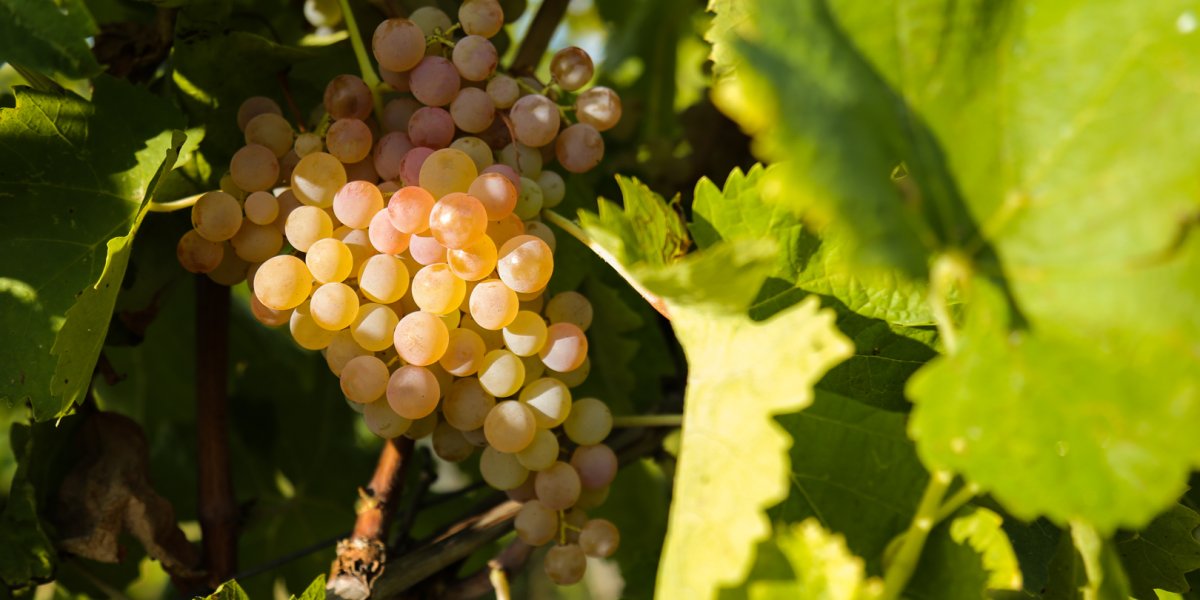The white grapes of Custoza DOC Wine
The southeastern region of Lake Garda, which includes the municipalities of Sommacampagna, Villafranca di Verona, Valeggio sul Mincio, Sona, Bussolengo, Lazise, Pastrengo, Peschiera del Garda, and Castelnuovo del Garda, has been a renowned wine-growing area since ancient times.
It is in this land, characterized by morainic soils, that white grape varieties such as Garganega, Trebbianello, Bianca Fernanda (or Cortese), Malvasia Toscana, Riesling Italico, Sauvignon, Pinot Bianco, Chardonnay, and Incrocio Manzoni take root. These grape varieties are used in the production of Custoza DOC wine.
The Custoza DOC white wine, in conformity with the production regulations, is exclusively made from the Garganega, Trebbianello (a local biotype of Tocai Friulano), and Bianca Fernanda (a local clone of Cortese) grapes, either individually or blended, making up at least 70% of the wine, with no single variety exceeding 45%. Certain other white grape varieties (Malvasia, Riesling, and Manzoni Bianco) may be added, either individually or in combination, up to a maximum of 30%.
Custoza DOC wine stands out for its richness and complexity. These characteristics lie in the harmony of the blend of different native grape varieties, each complementing and enhancing the other. This not only ensures its quality even in the most challenging years, but also gives it a great stability over time.
Garganega brings a delicate floral character and crisp fruit aromas, while Trebbianello imparts a vibrant yellow color, and Bianca Fernanda adds subtle aromatic notes.
This wine is highly versatile, thanks to its freshness, along with its fruity and slightly saline notes. It makes for a delightful wine on any table, perfectly pairing with summer appetizers, seafood dishes, and pasta.
Moreover, when sourced from selected vineyards, Custoza DOC wine also demonstrates excellent aging potential over time.
Origins and Characteristics of the Grape Varieties :
Garganega
-
ORIGIN: Garganega is an ancient vine of Greek origin, passed to Sicily and named Grecanico d’Or. Extremely adaptable to different soils and winemaking techniques, it can generate dry, sweet, still, and sparkling wines. This grape is widespread in Veneto, more than 30 percent of the total number of Veronese vines. In addition to the Custoza area, whose blend contributes from 20 to 40 percent, Garganega is also widespread in the Soave and Gambellare area on the Berici Hills. It gives aromatic wines, pleasant on the palate and nose for the fruity scent.
-
CHARACTERISTICS: The cluster is large, long, cylindrical-pyramidal in shape, winged, and relatively loose. The grape is medium, spherical, slightly flattened; pruinose skin, not very thick, golden-yellow; pulp with a neutral flavor, slightly acidic.
Trebbianello
-
ORIGIN: also known as Tocai Friulano or Tocai Italico, Trebbianello is a vine that claims at least two centuries of Italian character. Recent studies by the Experimental Institute for Viticulture have identified it as sauvignonasse, an old Bordeaux vine where it has practically disappeared.
-
CHARACTERISTICS: it presents itself to the eye as a beautiful golden yellow, with greenish reflections. It is fine on the nose, with unmistakable aromas of fruit. It is soft and round on the palate, and the disciplinary allows it from 10 to 45 percent. The bunch is medium, truncated pyramidal, with one or two wings, medium compact.
Bianca Fernanda (or Cortese)
-
ORIGIN: the origin of the Cortese vine, which in the Custoza area is known as Bianca Fernanda, is not specific, but it is believed that it derives from the provinces of Alessandria, Novara, and Tortonese and has been known in Piedmont since the 18th century also with dialectal terms corteis, courtesia and courteis. The specification grants it from 0 to 30 percent.
-
CHARACTERISTICS: it is a grape with golden yellow berries and sweet pulp. It is a robust vine that grows beautifully on hills exposed to the sun. It produces abundant fruits that ripen between September and October. It gives a straw yellow-colored wine with an intense, pleasant aroma. The cluster is medium to large, conical, pyramidal, winged, loose.
Incrocio Manzoni
-
ORIGIN: This vine hides the fruit of the work of Professor Luigi Manzoni, dean of the Enological School of Conegliano, between the thirties and fifties. Riesling Renano and Pinot Bianco were crossed after several attempts to obtain Manzoni crossing. The specification grants it from 0 to 30 percent. It was included in the DOC thanks to the will of the Monte del Frà winery, which discovered how this vineyard was able to give longevity to Custoza.
-
CHARACTERISTICS: Manzoni is often used in blending with other grapes for its contribution to acidity. It has a rich and delicate bouquet with fresh fruity notes and light aromas in purity. The bunch is small, short, medium compact, cylindrical-conical in shape, often with a wing.




